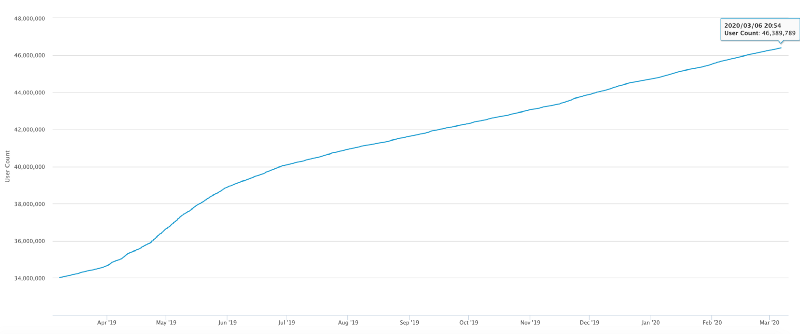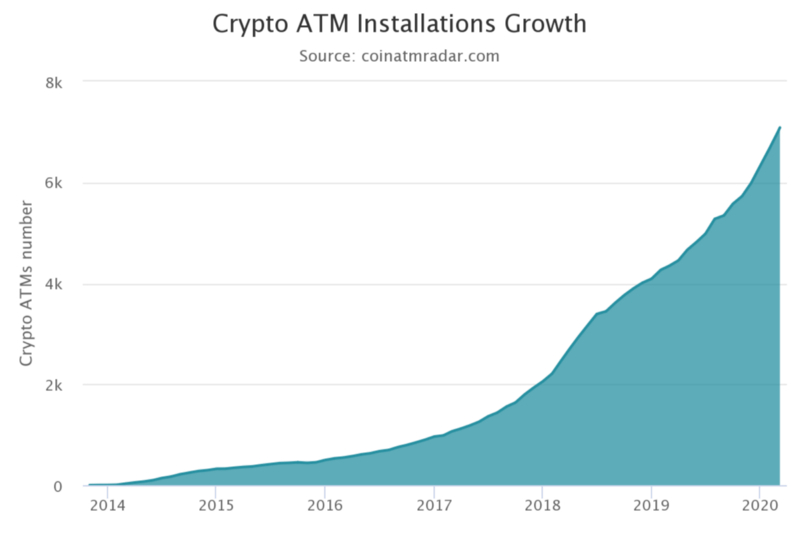The 6 Priorities for Bitcoin Development in the Coming Years

The community needs to focus on these priorities.
Bitcoin is a phenomenal success. Even its fiercest opponents agree. No matter how much they criticize Bitcoin, they cannot deny the reality of the numbers. And the numbers are simply phenomenal.
In just over 11 years of its existence, Bitcoin has managed to reach a capitalization of over $166 billion. Its price, which is around $9.1K today, has even reached $20K by the end of 2017.
Its security has never been compromised, and Bitcoin has an uptime of 99.98%, which has nothing to envy to Web giants such as Google, Facebook, or Amazon.
When you look at how far Bitcoin has come so far, it’s quite incredible to think that Bitcoin has only reached a tiny part of its goals. This is something that says a lot about the potential of Bitcoin, whose mission is to provide everyone with a real alternative to the current monetary and financial system.
In order to succeed in its mission, Bitcoin will have to be accompanied by Bitcoiners, who will play the role of missionaries. For the years to come, I see 6 priorities in which the community must invest in order to move Bitcoin forward the right direction.
1. Spreading Bitcoin by Educating Always More People
Estimating the number of users of the Bitcoin Blockchain is not an easy thing to do. The number of addresses created on the Bitcoin Blockchain is not an accurate estimate of the number of Bitcoin users.
Among the figures we have available is the estimated number of wallets created on the Bitcoin Blockchain.
As of March 6, 2020, we know that there are 46,389,789 users of the Blockchain.com wallet for the Bitcoin network:

This number is for one platform only. To this number, we have to add the wallets on Coinbase, Binance, … In total we must be close to 200 million wallets.
However, this figure does not accurately reflect the number of users on the Bitcoin network since users have the option of owning multiple wallets.
In addition, this number of wallets also includes wallets that have not been used for a long time. Their owners could therefore disappear and leave the network.
Actually, some estimates put the number of unique users on the Bitcoin network at 5.9 million.
However, for what follows, this will not make much of a difference. So I will start from the approximate figure of 200 million wallets on the Bitcoin Blockchain.
Currently, the United Nations estimates that there are 7.8 billion people on Earth.
That means that less than 0.60% of the world’s population currently uses Bitcoin.
Even worse, of those 0.60% of the world’s population who use Bitcoin, many don’t realize that Bitcoin’s purpose goes far beyond the financial aspect.
Bitcoin is a revolutionary system that aims above all to allow you to live on your own terms rather than being subjected to a flawed system that doesn’t protect you.
In the years to come, a lot of work will have to be done to spread the good word around Bitcoin to as many people as possible.
The challenge of democratizing Bitcoin will be twofold:
- To promote understanding of Bitcoin by showing the general public how it is different from the current monetary and financial, and especially more protective for people.
- To show that the Bitcoin revolution is multifaceted: technological, industrial, social and ideological.
This work of evangelization will pass through the Bitcoiners who will continue to explain Bitcoin in an educational way to the greatest number of people. This will obviously start with the journalists who will have a role in spreading the right message about Bitcoin.
The production of quality documentaries about Bitcoin will also be important because television helps to spread the message faster.
2. Improving Privacy Again and Again
Bitcoin is a pseudonymous network that guarantees much more privacy than the current monetary and financial system. When you tell someone about Bitcoin, you should not hesitate to highlight this aspect of Bitcoin.
Bitcoin will be the last line of defense in protecting the privacy of citizens in the face of the surveillance society that is taking hold around the world.
Of course, Bitcoin alone will not prevent the installation of facial recognition surveillance cameras in cities. Nevertheless, it will preserve the confidentiality of your transactions.
And it will already be something essential in the future that will benefit all Bitcoin-using citizens of the world.
Future developments of Bitcoin will bring ever greater privacy to the users of the network.
I’ll take it as proof:
- Taproot which will make each Bitcoin transaction similar to the others by removing information about unrealized conditions.
- CoinJoin which is an information mixing technology that helps to better disguise users participating in a transaction.
- The Lightning Network which will allow transactions to be taken out of the monitoring of the main network into a secondary layer.
All of these community efforts will need to be sustained and continued in the future so that Bitcoin will always be a little more respectful of the privacy of its users.
3. Making It Even Easier to Use Bitcoin
Bitcoin leaves no one indifferent. Bitcoiners find it, rightly in my opinion, revolutionary. People who take advantage of the current system find it dangerous. Nevertheless, these two categories of people agree on at least one fundamental thing:
Bitcoin is the most innovative and disruptive technology since the Internet emerged.
In the early days of the Internet, the older people will remember how inconvenient sending email could be. The user experience was disastrous.
For those who didn’t know, this is what the Microsoft Mail application that allowed sending emails under Windows 3.1 looked like:

You quickly understand why many people needed extensive training to be able to use computers and the Internet in the early days.
Today, the user experience has improved enormously, and everyone can easily send emails without even knowing all the technology behind it.
Bitcoin was born at a time when smartphones were beginning to take over. Dedicated mobile applications were soon offered.
I personally find that the user experience of Bitcoin after 11 years of existence is much better than that of the Internet at the same stage of its evolution.
Nevertheless, there is always room for improvement. In order to promote the adoption of Bitcoin to the greatest number of people, buying Bitcoin should become as simple as buying goods on Amazon.
When introducing Bitcoin to non-technical people, one should not immediately talk about the technical advantages of Bitcoin.
Many Bitcoin users may be put off if you talk to them about decentralization, cryptography, sovereignty or privacy.
Wallet applications must hide all the underlying complexity of Bitcoin from end users.
Conducting Bitcoin transactions should be a natural thing, and the average user should not need to know the details of the Bitcoin public/private key system for example.
So a lot of work needs to be done on usability in the coming years.
4. Boost Bitcoin Scalability With Lightning Network
Currently, Bitcoin can handle up to 7 transactions per second. Comparisons with centralized systems such as Visa or PayPal do not do Bitcoin justice.
Visa processes 2000 transactions per second, and claims to be able to handle up to 24K transactions per second.
PayPal supports up to 200 transactions per second.
These systems can display this kind of performance because they are fully centralized.
In contrast, Bitcoin is completely decentralized. Its Blockchain is permissionless and trustless. Thus, anyone can become a node in the Bitcoin network if they wish.
Guaranteeing the security of a network such as Bitcoin by ensuring its smooth operation while maintaining such a level of decentralization is a feat.
Bitcoin does it perfectly. Nevertheless, it induces lower performance than the centralized systems to which it is frequently compared.
In the future, Bitcoin will have to support more transactions per second. Improving the scalability of Bitcoin will be a key issue in the coming years.
One promising solution is the Lightning Network, which should allow Bitcoin to have almost infinite scalability.
For this, the Lightning Network protocol proposes the creation of micro payment channels. These micro payment channels will help to relieve congestion on the main Bitcoin network, and prevent it from becoming saturated.
The solution will therefore be located at the level of a second layer built on top of the Bitcoin.
Work on the Lightning Network is progressing slowly, but this protocol will be essential to make Bitcoin usable by millions of people in the future in a non-custodial way.
As is often the case with Bitcoin, solutions are emerging from the many startups building services around Bitcoin. This ultra rich ecosystem is also what allows Bitcoin to remain the king in the cryptocurrency industry after all these years.
5. Promoting the Acceptance of Bitcoin as a Means of Payment
Bitcoin has already proven itself as a safe haven in times of crisis. It is an accomplished store of value alongside gold now. This corresponds to Phase 1 of its mass adoption by the general public.
Phase 2 of its mass adoption has already begun, and corresponds to the increasing use of Bitcoin as a means of payment.
Merchants accepting Bitcoin for payments are growing in number.
In the coming years, this trend will intensify. As a Bitcoiner, you should also spread the word by urging merchants you know to support Bitcoin.
One of the arguments that is hitting home with merchants is that they will be among the early adopters by supporting Bitcoin now. This will allow them to attract many Bitcoiners.
Bitcoin will see its price rise sharply, and it will be important that happy Bitcoin owners can use what they own for their daily purchases.
Since the world will not become all Bitcoin overnight, it will also be important to promote Bitcoin’s liquidity.
This means allowing Bitcoin owners to withdraw corresponding fiat money when they go to places where Bitcoin is not supported as a means of payment.
ATM Bitcoins play an important role in allowing Bitcoins to be bought with fiat money, and Bitcoins to be sold for fiat money.
The number of ATM deployed worldwide is constantly increasing. As of March 7, 2020, there are now more than 7,000 ATM:

In the coming years, this figure is also expected to grow strongly.
These ATM will also accelerate the adoption of Bitcoin by the general public.
6. Limiting the Personal Information to Be Disclosed When Using Bitcoin
As I frequently explain, Bitcoin should allow you to preserve your privacy as best as possible. As such, you should be able to use Bitcoin with minimal disclosure of personal information about yourself.
Currently, cryptocurrency trading platforms such as Coinbase require more and more information about you when you open an account.
This is part of the KYC (Know Your Customers) movement. However, this requirement puts your privacy at risk since your identity can be more easily linked to your Bitcoin wallet, then to your addresses on the Bitcoin network.
In fact, third parties can potentially know what you own in Bitcoin, but also list all the transactions you have made on the network.
In the future, a lot of work needs to be done in order to use Bitcoin with a minimum of personal information to reveal.
The widespread deployment of the Lightning Network should be a good solution to make the use of Bitcoin more confidential for users.
This will be something to watch for in the years to come.
Conclusion
Bitcoin has come a long way so far. So is the road ahead in the years to come. Bitcoin is here to stay, and the best is yet to come.
It’s crazy to say that when Bitcoin’s market capitalization already exceeds $160 billion. Nevertheless, it is the pure truth, and it shows how special Bitcoin is.
In order to help Bitcoin fully realize its mission in the future, Bitcoiners will have to focus their efforts on the 6 priority areas of development that I have detailed in this story: education, privacy, user experience, scalability, promotion as a means of payment, and limiting the amount of personal information to be disclosed.
As always, the Bitcoin community is already fully aware of these challenges, and has been working on them for a long time. So the coming years are going to be extremely exciting in the Bitcoin world.







